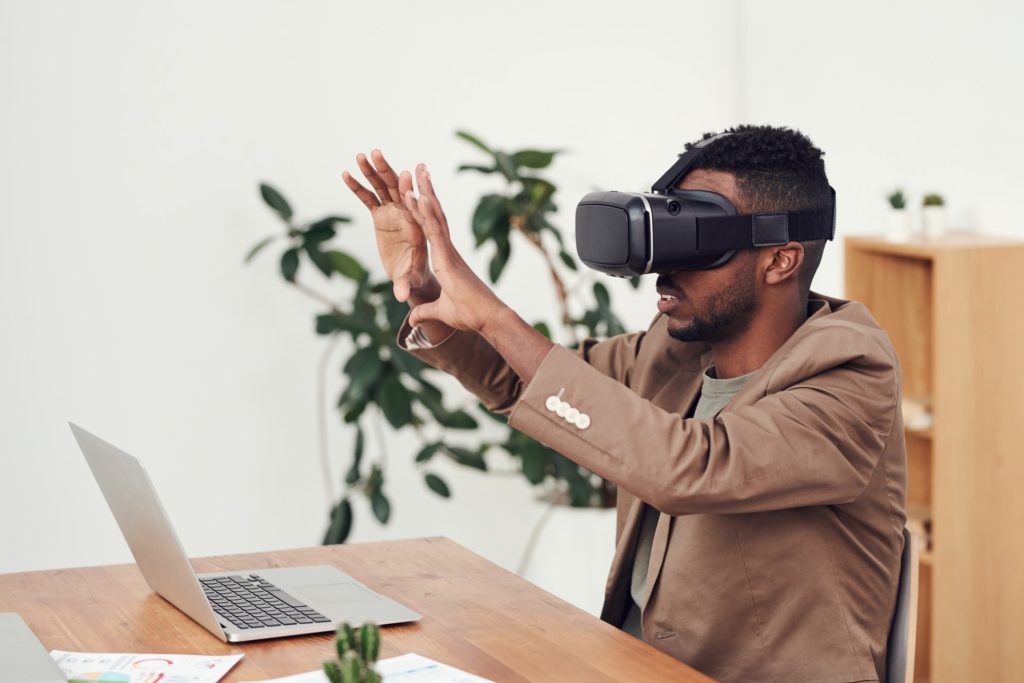
By Yvonne Milosevic
We’ve made peace with the fact that virtual meetings are with us for the long haul. Despite the vaccine’s imminent arrival, many companies are allowing employees to work from home well into 2021. Meaning, we’re going to be dealing with “Zoom fatigue” for the foreseeable future. That is, unless virtual reality (VR) technology steps in to relieve us from the limitations of video calls.
No longer relegated to the gaming industry, VR can help us reimagine how work gets done. “Virtual reality — and the use of avatars in particular — is spreading as an emerging management and communication tool in organizations,” says UV Darden Professor Roshni Raveendhran, who studies the future of work and the integration of novel technologies into the workplace.
One reason video calls are so exhausting is that we have to focus more than we do during a face-to-face chat. On Zoom, everyone is staring at you for the entire meeting. We’re not comfortable with these long stretches of mutual gaze. In fact, it causes what’s called a “non-verbal overload.” VR avatars could make our remote work interactions more bearable.

A handful of tech companies have created lifelike 3D avatars you can use instead of your face in meetings. Interacting with avatars requires less mental processing and thus reduces Zoom fatigue, Raveendhran explains.
How Avatars Work
Loom.ai, purchased by Roblox this week, launched LoomieLive about a month into the COVID-19 pandemic. It lets you create a personalized, voice-driven avatar to use on any video conferencing service. As Refinery29 explains,
While you speak, your avatar lip-syncs in real-time and looks straight into the camera, even when you don’t. You’re free to turn away from your screen, get out of your chair to stretch, or even leave the room — all while your avatar appears engaged in conversation, speaking your exact words.
“As companies start thinking about making remote work a longer-term reality,” says Raveendhran, “one key challenge pertains to missing social connection, the feeling of being part of the same group. So, there will be a lot more demand for immersive technologies like VR. That’s why it’s important to understand the psychology that drives people to adopt some of those technologies.”

Raveendhran co-authored a recent study examining when and why leaders might prefer interacting with their subordinates via computer avatars, rather than face-to-face. She learned that managers liked avatars because they allowed for more psychological distance than do face-to-face interactions.
“We now know,” says Raveendhran, “that people can adopt VR technologies to psychologically buffer themselves from uncomfortable situations. And this distancing aspect can sometimes be as useful in the workplace as the immersive experiences that VR might offer.”
VR technology for the office environment is still in its infancy. Yet its transformation over the next decade will be profound. For now, when Zoom calls, we’ll happily switch over to let our avatars do the talking.


